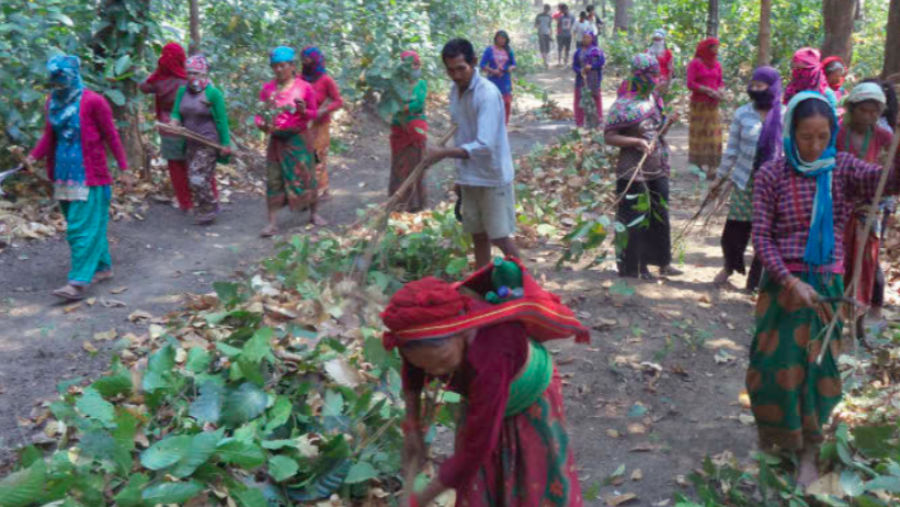National
Community forest users’ groups decry continuation of heavy taxes
The budget exempted the 15 percent tax levied by the federal government, but the taxes by local and provincial governments remain unchanged.
Chandan Kumar Mandal
Community forest users’ groups have been left dismayed as the new budget failed to ease the heavy taxes being imposed on them by all three tiers of government.
They had expected that the fiscal budget would relieve them from backbreaking taxes being levied on them under various heading by the local, provincial and federal governments.
But the budget for the fiscal year 2020-21, presented by Finance Minister Yubaraj Khatiwada on Thursday, only addressed their concerns partially.
The government has decided to waive off the 15 percent tax imposed on community forest users’ groups on the sale of Saal (Shorea robusta) and Khayar (Acacia catechu) timbers. Besides, it has also announced to promote forestry-based industry to create employment.
“We welcome the decisions to remove the 15 percent tax and promote forestry-based industry. However, our major concern regarding layered and heavy taxes remains the same,” said Bharati Pathak, chairperson of the Federation of Community Forestry Users’ Nepal, the umbrella organisation of over 22,000 community forest users’ groups in the country.
For over a year now, community forest users’ groups have been protesting against government tax policy on their income. They have staged protests in various districts, demanding that the government reconsider the taxes.
According to community forest promoters, various enforced and proposed taxes at all three levels of the governments had once totalled up to 90 percent of the annual transactions of the community forest users’ groups.
They feared such a massive taxation would end up discouraging local communities from taking part in conservation activities.
As per the Finance Act, community forest users’ groups have been contributing 15 percent of their income made from the sale of Saal and Khayar timbers to the Federal Reserved Fund.
Likewise, the Local Government Operation Act, 2017 has stated that community forests should contribute 10 percent of their product sales to the Reserved Fund at the local level. Furthermore, an additional 13 percent Value Added Tax is added to the sale of timber products for commercial purposes. Besides, all of these provinces can also charge taxes on forest products sold from community forest users’ groups.
According to Pathak, Bagmati Province and Province 1 have enforced 10 percent and 15 percent taxes on the income of community forests.
“The budget did not speak about these taxes,” said Pathak. “Our demand is there should be one tax which should be distributed among all three levels of the government.”
As per the existing Community Forestry Guidelines, 2014, community forest groups should spend income from forest products on forest development (25 percent), poverty eradication and livelihood (35 percent) and on social development programmes (40 percent).
This requires community forest users to obtain personal account numbers (PAN), which means their income is further liable to 25 percent [income] tax—the provision community forest users find discriminatory.
“Registering PAN is mandatory but the whole process is full of hassles. During PAN renewal, the government officials ask income transactions of the past several years, which is not possible,” said Pathak. “There is hardly any income as forest groups spend most of their income on conservation and development activities. Forest groups are not a profit-making entity, but a conservation body led by the local community.”
Nepal’s locally managed community forests have been lauded internationally as a successful model conservation for not only protecting biodiversity but also recovering the country's green coverage and lifting locals out of poverty.
The sense of discrimination felt by the community forest users’ groups has also stemmed from the government decision to revoke income tax from drinking water users’ groups and cooperatives.
“Like water users’ groups and cooperatives, local forest users’ groups are also community-based orgnisations dedicated towards conservation with public participation,” said Pathak. “While the same budget removed income tax from these groups, why could it not do the same for community forest users’ groups?”




 18.12°C Kathmandu
18.12°C Kathmandu



.jpg&w=200&height=120)











